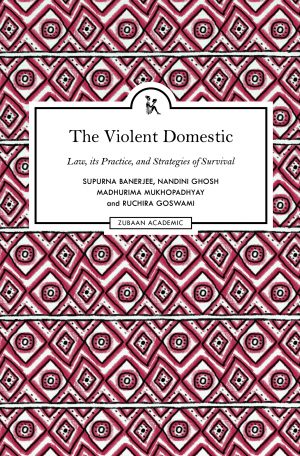
The central theme of The Violent Domestic: Law, Its Practice, And Strategies of Survival by Madhurima Mukhopadhyay, Nandini Ghosh, Ruchira Goswami and Supurna Banerjee, is its engagement with the implementation and impact of the Protection of Women against Domestic Violence Act, 2005 (PWDVA). The book, published by Zubaan in 2022, delves extensively into the interpretation, negotiation, use, and abuse of this law, and the changes in the socio-structural and everyday lives of the women to whom it caters. It identifies violence against women (VAW) as a pervasive problem visible across all cultures. It is a global concern not just for its violation of basic human rights, and its significant health burden, but also for its intergenerational demographic consequences.
The book is divided into an Introduction, Chapter 1, Understanding the Violent Domestic, Chapter 2, Locating the ‘Domestic’ in and beyond the Law, Chapter 3, Using the Law: Mapping Survivor and Institutional Perspectives in West Bengal, Maharashtra, and Telangana, Chapter 4, Marginalities within and outside PWDVA, and concludes with Rethinking Violence, Domestic and Legal Solutions: Towards a Conclusion.
The book rests on a study conducted in 7 districts of West Bengal: Howrah, Kolkata, South 24 Parganas, North 24 Parganas, Bankura, Murshidabad, and Darjeeling, focusing primarily on Domestic Incident Reports (DIRs) between 2011-2015, and interviews with survivors of violence, and other stakeholders in the ambit of PWDVA.
The Introduction shows how the women’s movement defined the feminist underpinnings of PWDVA which highlighted the invisible forms of violence in the intimate sphere of the domestic-familial. And the need to place it into the social-legal spaces of intervention within the realm of the public. Chapter 1 details the profiles of the complainants and their abusers in the DIRs vis-à-vis age, marital status, occupational profile, religion, and rationalization of domestic violence in terms of substance abuse, dowry demands, extramarital affairs, pregnancy, childlessness, incidence and forms of violence, and the impact on the children. Chapter 2 explores the domestic as the site of violence, the complexities constituting the domestic, and what it means to inhabit this space for the victim-complainant. It engages with the centrality of marriage and cohabitation in the PWDVA, and the ubiquity of violence in the all-consuming marital home while also distinguishing it from violence in the natal family, extending its discussions on other related issues like a stigma in the inability to preserve the sacredness of the domestic, familial support, and community level mediation in the face of violence.
Chapter 3 narrativizes the lived experience of the survivor of domestic violence- the value of the domestic for them, their understanding and accessibility to, and strategic redressal of violence through the law, and the myths of misuse. It also focuses on the usability of PWDVA in terms of the institutional mechanisms through which the law becomes operationalised and compares it to similar apparatus from states like Telangana and Maharashtra. This includes an analysis of the role (including operational constraints) of protection officers, police, lawyers, courts, and service providers, and the significance of counselling and mediation. Chapter 4 engages with the notion of non-homogeneity of experience of violence amongst women, and exclusion of women belonging to marginal groups in the access of this law including disabled women, women with psycho-social disabilities, and lesbian and trans women. The barriers to access of the law to these marginalities outline among others, a consequence of definitional aspects of law, negative stereotypes, and general lack of access to resources for these groups, and a reflection of the need for intersectionality in women’s movement towards addressing the exclusions in the practice of the law. The concluding chapter is a commentary on the journey of the PWDVA and its effectiveness in bringing domestic violence from the ambit of criminal law to civil law, reflecting on the failure of the state and its apparatus to address the underlying patriarchal discourses that affect the implementation of the law and the urgent need to foster a politics of feminist consciousness in its implementation.
The book situates domestic violence in the context of the gendered inequality embedded in the largely patriarchal social hierarchies that constitute most societies. It asserts that the survivors using this law are not feminists-experts but everyday women who are negotiating the mandate of the law to renegotiate their position within the patriarchal and sexist set-up of the home, legal system, and society at large, and ‘manage’ their violation on their terms even if not end it. It argues that viewing violence only in its binaries of ordinary versus extreme, public versus domestic is inadequate in understanding the complexities of similarities and dissimilarities of its effects on individual and collective suffering. And rather advocates for a focus on the everyday mundane practices that tacitly legitimizes and routinize violence as a structural act committed by the ‘social’ as against an individual act of oppression.
***
Suman S. Shanker is a doctoral candidate in Sociology at the Department of Humanities and Social Sciences, Indian Institute of Technology (IIT) Mumbai.